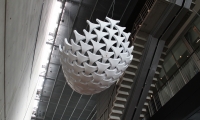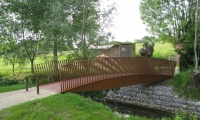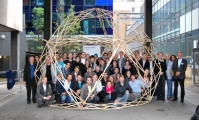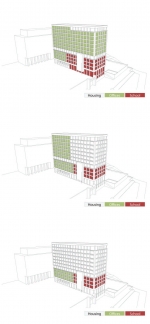Curved-line folding is the act of folding a flat sheet of material along a curved crease pattern in order to create a 3D shape, using the combination of folding (plastic deformation) and bending (elastic deformation). Most applications of curved-line folding only make use of the end state of the folding process: a static solution obtained through folding along a curved crease pattern. However, the elastic deformations that occur when a flat sheet is forced into a curved shape can produce an interesting transformation process. When one surface area is bent, the forces and moments are transmitted through the curved creases to the adjacent surface areas, which results in a folding motion. As a result, this kind of transformation process could be used for the development of a new type of pliable system, finding its application in the context of kinetic architecture.
The aim of my PhD research is to study the potential of curved-line folding as a technique to design pliable systems for kinetic architectural applications. The main goals is to better understand the relationship between the geometry, the kinematics and the structural behavior of different systems. The main challenge, however, is to find solutions for the materialisation and actuation of this new kind of deployable structure.





